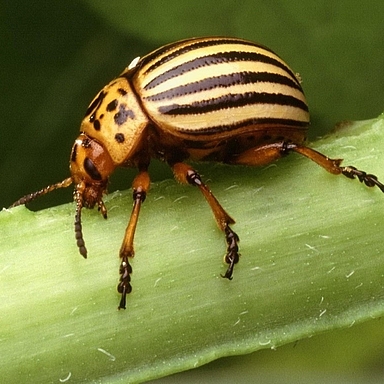Project 19.2

- PhD student: Léonore Wilhelm
- Supervisor: Shuqing Xu
- Co-Supervisors: Claudia Keller Valsecchi, Marion Silies
- Research Group
Duplication is a major source of new genes during evolution. Understanding how a gene and its regulation evolve after neofunctionalization is a major challenge in evolutionary biology. The Colorado potato beetle (CPB) produces a neurotoxin, leptinotarsin, that evolved from a duplication of the juvenile hormone esterase gene. The aim of my PhD project is to study the evolution of this recent gene and its regulation using transcriptomics and comparative genomics.
My PhD project focuses on a neurotoxin, leptinotarsin, produced by the Colorado potato beetle (Leptinotarsa decemlineata), a major pest of potato crops. Several parts of leptinotarsin protein sequence show a high similarity with the Juvenile Hormone Esterase (JHE) of the CPB, suggesting that the toxin could have evolved from a duplication of the JHE gene (Crosland et al 2005). JHE is an enzyme degrading the juvenile hormone, a key hormone of insects, involved in molting, reproduction and diapause.
While JHE expression is highly variable through the Colorado potato beetle life (Kramer and De Kort 1976, Vermunt et al 1999), leptinotarsin is active in every developmental stage of the insect (Hsiao and Fraenkel 1969). Moreover, JHE mRNA is expressed mostly in the fat body (Vermunt et al 1999), when our preliminary data suggest that leptinotarsin is produced by a specific type of hemocyte. This suggests major modifications in the cellular regulation of leptinotarsin compared to JHE to allow for spatial and temporal shift in the gene expression. Leptinotarsin is present in the majority of species within Leptinotarsa genus (Hsio et al 1978) but seems to have evolved different mechanism of action according to the species (Yoshino et al 1980). I will perform knockdown and use single-cell transcriptomics to uncover the cellular regulation of leptinotarsin gene. I will further use comparative genomics to retrace the evolutionary history of the toxin.
